1410, PARKSON, 44-60 ZHONGSHAN ROAD, QINGDAO, CHINA
What is Anchor Chain
Anchor chain refers to a special chain that connects the anchor and the hull and transmits the anchor's holding power. It is often composed of anchor side chains, intermediate chains and end chains. According to the structure of the chain link, it can be divided into two types: the anchor chain with stud and the anchor chain without stud. The strength of the former is greater than that of the latter. The length of the anchor chain is measured in sections, and the standard length of each anchor chain is 27.5m. The knots are connected with connecting links or connecting shackles. Usually, the chain length of the main anchor on each side of the 10,000-ton vessel is about 12 knots.
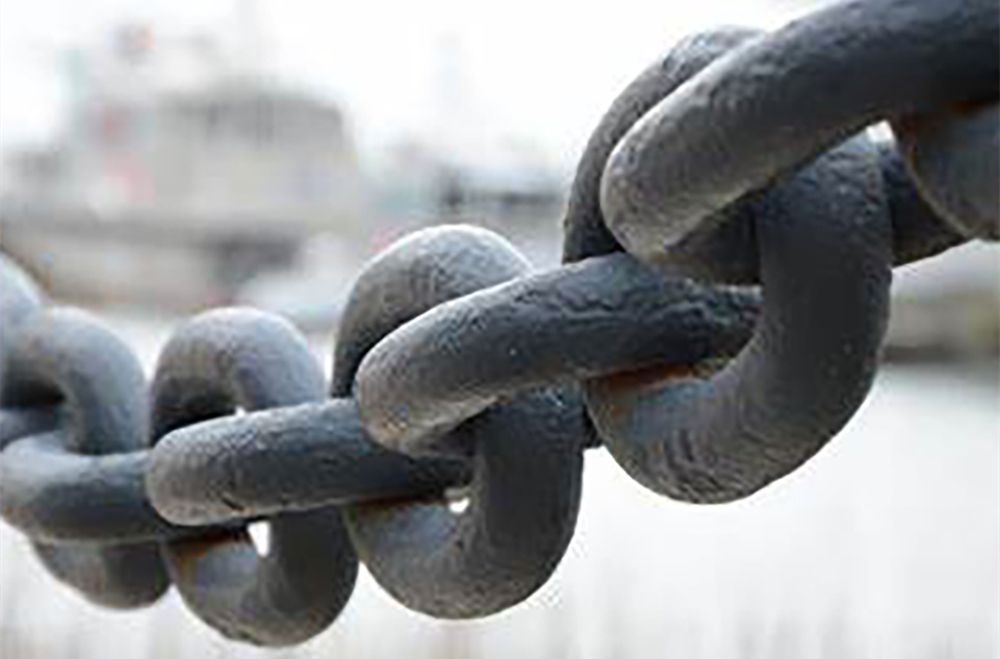
Types of chain
-Hot Dip Galvanized (HDG) - this chain is the preferred type of chain for anchors because of its high corrosion resistance. The only chain more corrosion resistance than HDG is Stainless Steel chain, but is 2-3x the price and not as readily available.
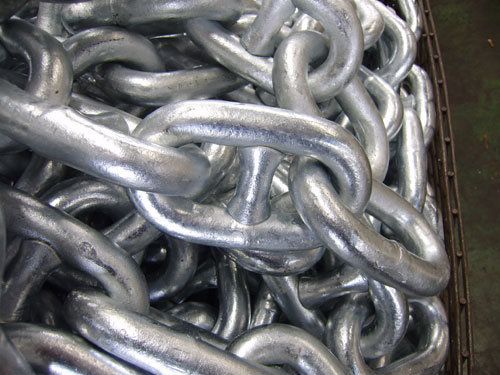
-Zinc Plated - Generally sold as an “all purpose chain” at hardware stores. This is not recommended for anchors, or any marine environment. The chain is much more shiny than HDG, however it will typically begin to rust after 1 month or less in any marine environment. Cost is typically about 50 cents less per foot than HDG, and thus HDG is preferred.
-Vinyl Coated Chain (VCC) - originally meant for playgrounds and swingsets, VCC is only recommended if you replace it each year.
Typically the coating will wear off after one season, exposing the uncoated bare steel chain, which will rust the first time it touches water.
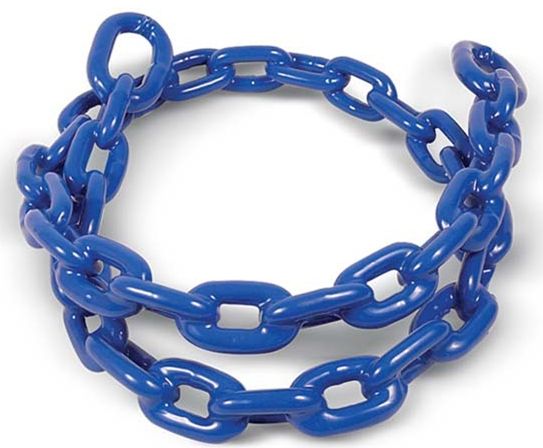
Also, VCC does not allow the links to move as independently as HDG chain. VCC is typically stiff, so the sagging effect of the chain
(known as catenary) to keep the anchor line, and anchor itself down, is not utilized with VCC.
An anchor chain could be utilized in a variety of ways, including
An anchor chain is used to hold a vessel in place for a long time, like overnight, or in an emergency, including when you run out of gas.
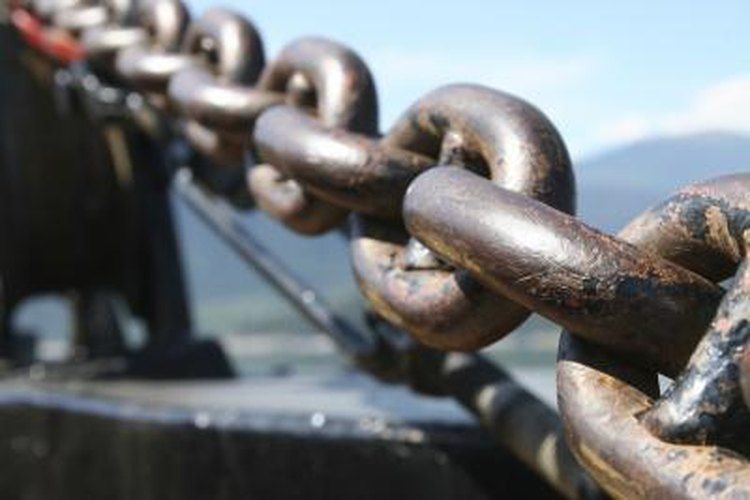
It keeps boats out of the surf and off the rocks, which is a safety feature.
It also allows boaters to temporarily secure their boat while fishing, eating lunch, or staying the night.
It also reduces the speed with which a boat drifts in the wind.
It is used to keep the vessel stable during storms and to slow down its passage through the water
Importance of the Anchor Chain
As seen, the anchor plays a major role in a vessel and offshore operations. However, it can only function as long as it remains attached to the floating structure.
Considering the tremendous amounts of force applied to the connection between the anchor and the ship during routine berthing or anchoring conditions, conventional methods of securing the anchor will eventually fail under the extensive stress.
The anchor chain refers to the component that attaches the anchor to the boat or structure and is usually referred to as the anchor rode (or anchor cable). It is superior to conventional methods in terms of strength and load-bearing.
The purpose of the anchor rode is to secure the anchor to a part of the vessel in such a manner that it can be easily hauled up when the need arises.
It also plays a major role in absorbing a certain portion of forces away from the main structure and anchor head. For instance, during storms or other similar weather conditions, the vessel or offshore rig tends to pitch and heel. This motion can intensify, causing damage to the vessel.
To dampen these forces, the anchor rode is designed to absorb a certain amount of the load. Since anchor chains and cables are built to withstand large forces on them, they are not drastically damaged or deformed by such loads. This absorption of forces away from the main structure and anchor is known as dampening.
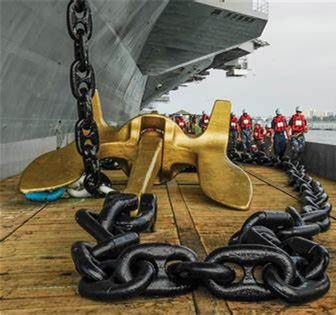
Important factors to keep in mind while selecting or designing the anchor chain are the
maximum permissible loads,
ease of storage, and
the expected length of the rode.
The stresses need to be checked for every unit of the rode. Metal chains have links as their primary unit component, while ropes and cables have fibres.
Ease of storage is another key factor in rode design. If the anchor rode cannot be reeled back in and then stored securely, it could lead to damage of the hull.
Every vessel or offshore installation has a rough idea of the operating locations, and consequently the maximum and minimum depths of the waterbodies at these locations. Based on these, the anchor rode is manufactured at a particular length at which it must be securely fastened.
The ratio of the length of the anchor rode paid out, and the actual depth of the waterbody is known as the scope. It represents a trade-off between vessel drifting and vertical forces on the anchor.
Scopes are usually in the range of 5:1 to 7:1. Shorter rodes have lesser slack, hence the ship does not easily drift off due to the natural wave motions. However, since the angle between the seabed and anchor rode is nearly ninety degrees, shocks and jerks are directly transferred to the rode and subsequently the vessel.
If the scope is increased beyond a certain value, it would drastically decrease the forces on the vessel, but would also allow the vessel to drift out into a larger region.
Learning more anchor chain information, pls click below:
https://www.huahanmachinery.com/anchor-chain01.html